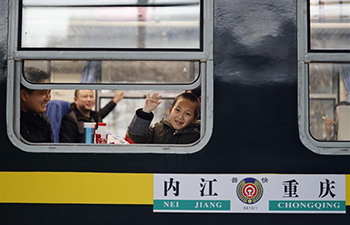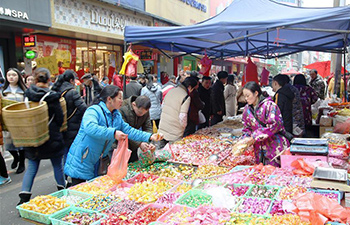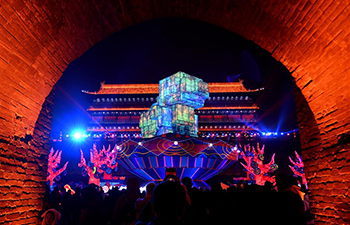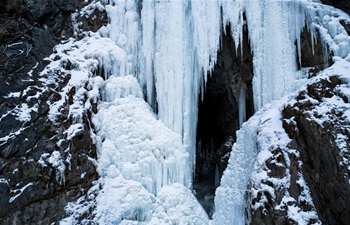
This combo photo shows attendants getting ready to work aboard the train K1/6 during the Spring Festival travel rush in Nanjing, east China's Jiangsu Province in January of 1998 (top, photo taken by Gao Meiji); and bullet train stewards taking part in an etiquette training in Nanjing, east China's Jiangsu Province, Jan. 17, 2019 (bottom, photo taken by Su Yang). China is experiencing its annual special "40 days" or Spring Festival travel rush, which is dubbed as the "largest migration on the planet," with 2.99 billion trips to be made over the 40-day period this year. During this period, hundreds of millions of Chinese return to their hometowns for family gatherings, to visit relatives and friends or just for a break from city life. Trains, means of transportation mostly chosen by Chinese passengers during the travel rush, have witnessed the fast development of the national railway network in connection with the changes of the world's biggest travel rush over the past decades. In the past, most commonly seen were low-speed trains or "green-skinned" trains as Chinese people like to call them. They had no air conditioning and were often crammed with people and huge bags bulging with goods in carriages. Returning home by train was a choice of nothing but grueling, from queuing up overnight to take a chance on a piece of ticket at the crowded railway ticket hall to enduring in the stuffy and congested train carriage for dozens of hours. Just 10 years ago, standing in carriages filled with passengers and their luggage for a 58-hour trip was ordinary for many. In the modern era of high-speed trains the past is just a distant memory for many urbanites. China has the world's fastest bullet trains which can run at a consistent speed of 350 km per hour. At that speed, the current train ride from London to Paris of two hours and 16 minutes could be half an hour shorter. China's high-speed railway lines currently reached 29,000 km, accounting for two-thirds of the world's total. The speed of trains has increased sixfold while the length of the entire railway system has expanded from only slightly more than 20,000 km in 1949 to some 131,000 km by the end of 2018. Thanks to this enormous train network, the journey home for 413 million Chinese, the number of people who travel via train during the holiday this year, has become faster, more convenient and more high-tech. Also, the country developed the world's largest ticket service site, with nearly 3.5 billion tickets sold each year. New technologies and services such as face scan check-in, online meal reservations and WiFi services have also been applied at many train stations. In the future, China will work ceaselessly to make the high-speed rail system more intelligent in terms of safety, maintenance, comfortability, and for technical upgrades. (Xinhua)















